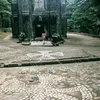
I have never heard of this fort before; it was a discovery made while embarking on the Bangalore-Goa road trip. Extremely happy to have visited it; but we had only two hours to explore the fort before we resumed on our journey. Hence could only cover the major structures and may have missed a few details also. The Chitradurga fort is a majestic edifice and is reasonably well maintained. But more important is the history it has witnessed and the stories we were able to unearth and carry with us.
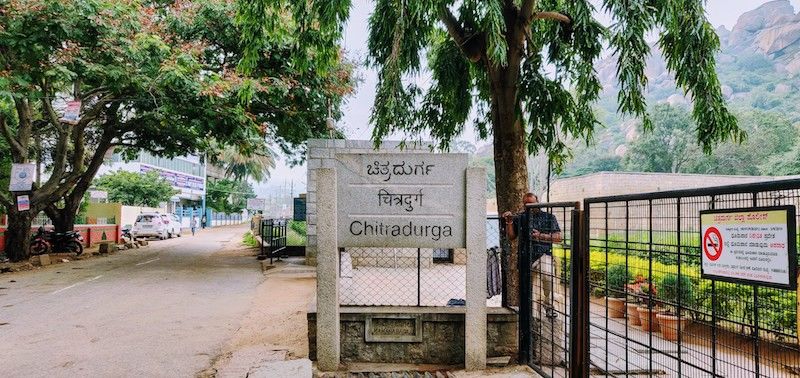
There is an entrance fee of Rs. 25/- per head for Indians and Rs. 300/- per head for foreigners. There is ample car parking space in front of the fort. Maybe because this is the first fort I have ever visited; am awestruck by the height of the walls. Another noteworthy point is that no cementing material is seen between these massive stones. Chitradurga is a hill fort, located 200 km from Bangalore. As in most forts, there is a moat in the front.
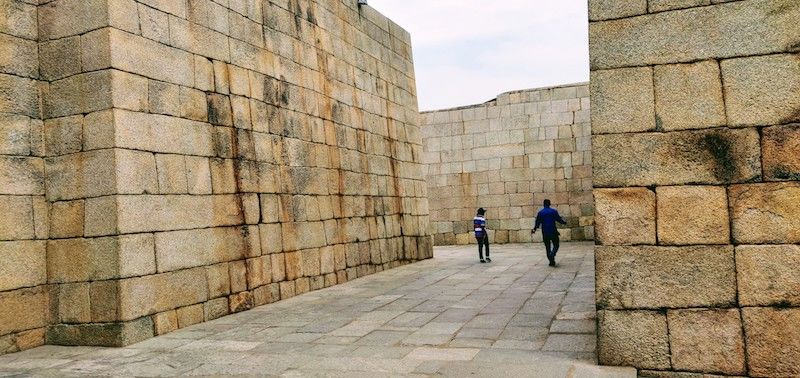
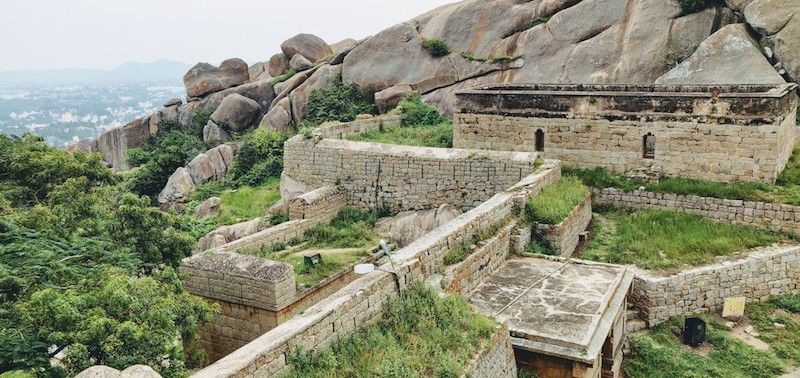
There are guides available at Rs 200/- to explain and take you to all the significant points in the fort.
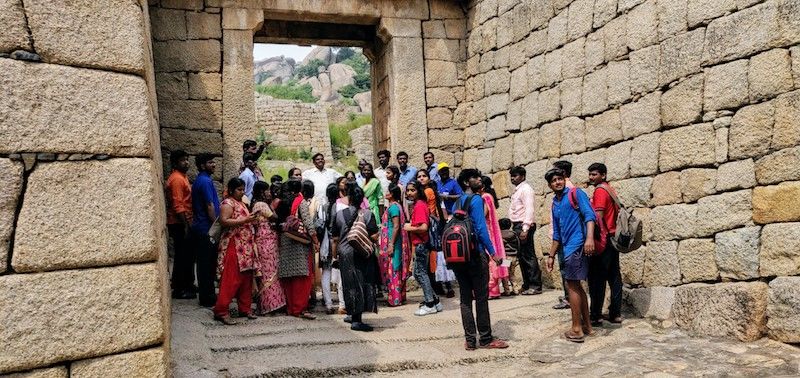
After the height of the fort walls, the next interesting feature are the passages, built at sharp 90° angle; this was a strategic decision. The 90° turns slowed down invaders as it restricted their line of sight and also made them easy targets for the defending soldiers who targeted them through the gun-slits in the fort walls.
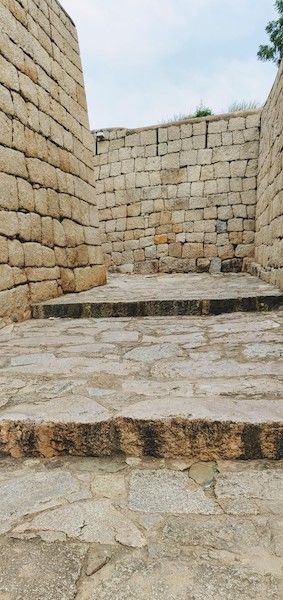
The large boulders seen strewn along the hillside provided the stones for building the fort. There is detailed explanation on the methods used by the masons to cut out the stones. The masons were able to split the rock precisely where they wanted by first making a series of closely-spaced small holes in the rock and then gently wedging the rock apart along the line of holes or by gently tapping iron pegs wedged into these holes. Water poured into the holes helped split the rock more easily.
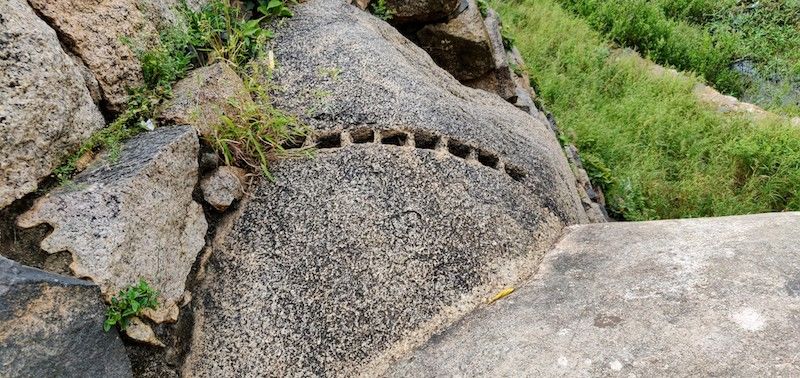
The fort is believed to be impregnable with seven lines of concentric ramparts – three lines below the hill and four on the rocky slopes and hence its also called Yelu Suthina Kote (Seven circumambulation fort).
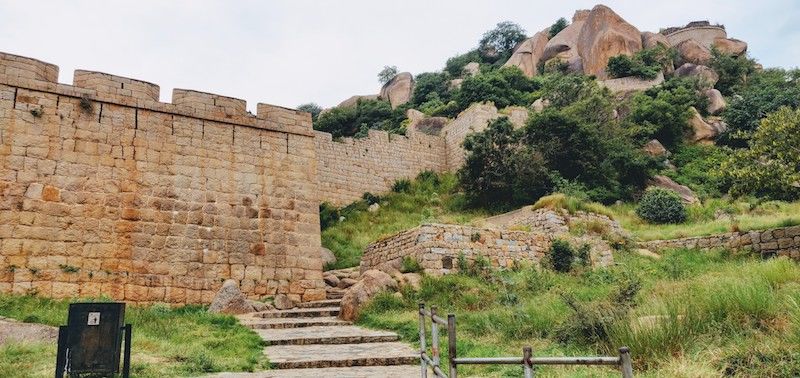
Inside among the marked sites are four massive grinding stones, placed in a large stone-walled pit; turned by buffaloes and used to crush gunpowder. There are also wells used for storing oil called enne (oil) kolas.
Going by Wikipedia, the fort’s name Chitradurga, means ‘picturesque fort’ in Kannada. The fort was built in stages between the 11th and 13th centuries by the dynastic rulers of the region including the Chalukyas and Hoysalas and later by the Nayakas of Chitradurga. The Nayakas of Chitradurga or Palegar Nayakas, were vassals to the Vijayanagara kings; most responsible for the expansion of the fort between the 15th and 18th centuries.
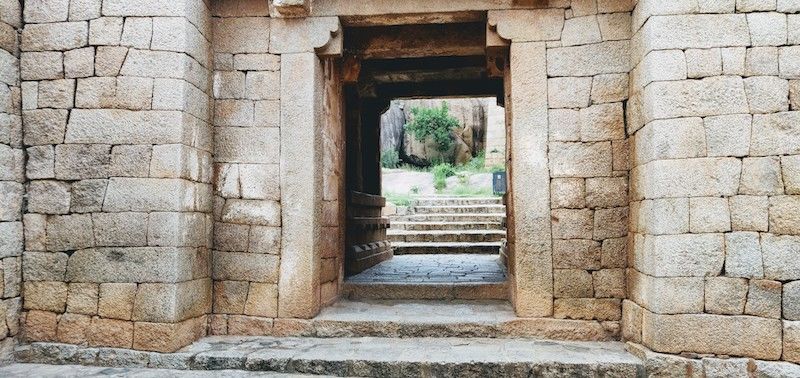
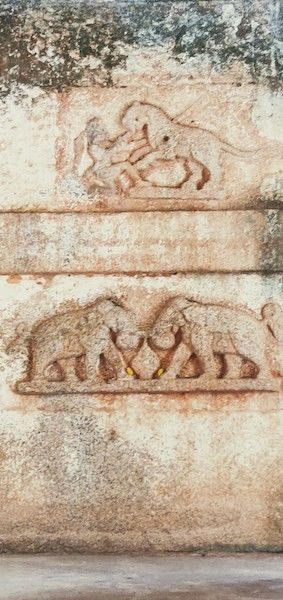
There are numerous temples inside the fort. The Eakanatheswari temple, built by Matti Thimmanna Nayaka in the 15th century, has a Deepa stambha (lamp pillar) and a Uyyale Khamba (swing arch) in the forefront.
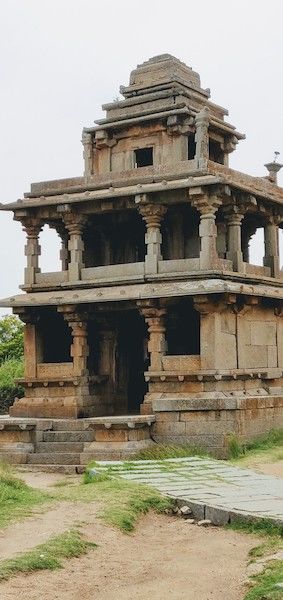
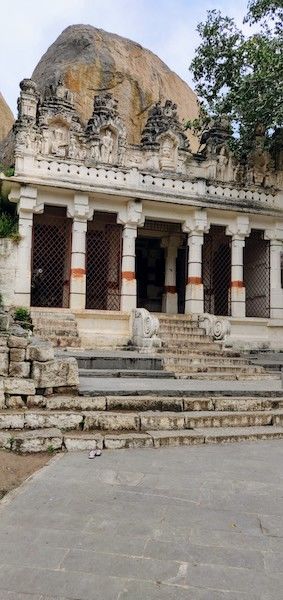
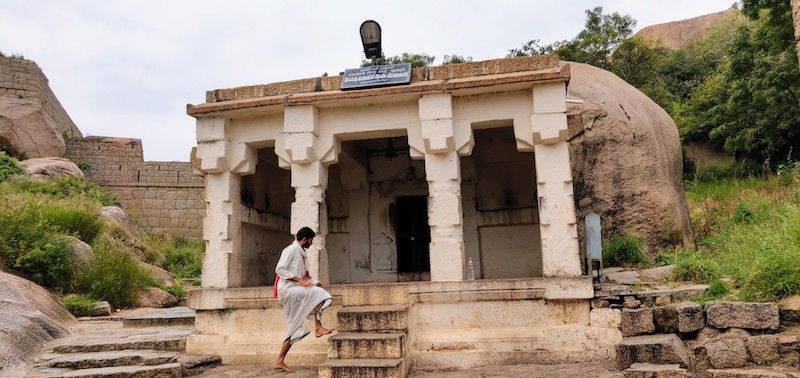
An interesting discovery was the board games etched into the stones of the Gali Gopura; this served as a point for entertainment. The game with the square grids is played by two people usually using stones or tamarind seeds.
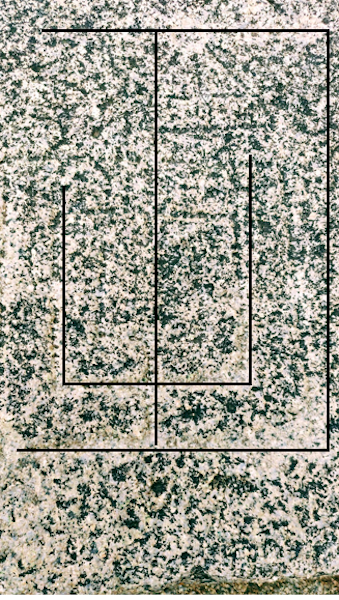
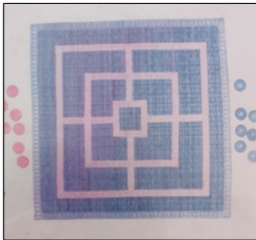
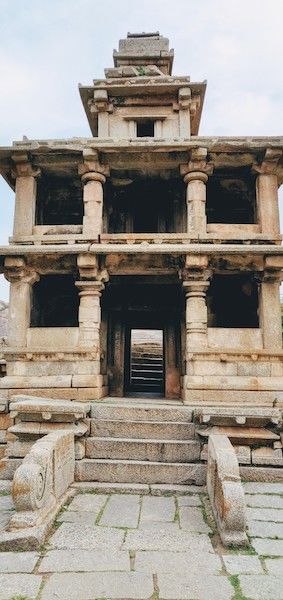
The fort was conquered by Hyder Ali in 1779 AD. The fort changed hands to the British after they defeated Tipu Sultan at Srirangapatna. They were grateful that they didn’t have to attempt to conquer this fort and once inside, they marvelled at the defence and offence strategies planned into the construction.
A secret inlet has been named after Obavva, a housewife who killed Hyder Ali’s soldiers who were trying to enter the fort through the secret entrance. It is called Onake (pestle) Obavva Kindi (aperture); the secret entrance named after her is the most sought after spot. She was asked to keep watch, while her husband who was guarding he entrance went to have lunch. She killed each soldier with a pestle as his head emerged from the opening and dragged his body inside the wall. By the time her husband and others came to her aid, many dead soldiers lay around her. Obavva’s courage and quick thinking single-handedly saved the fort that day.
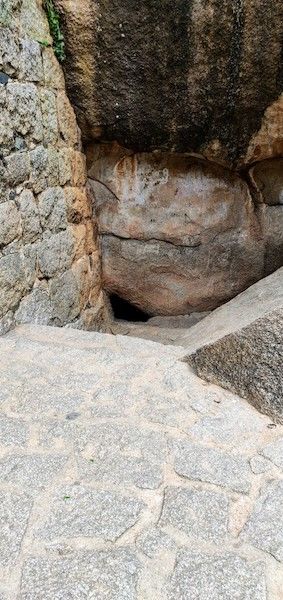
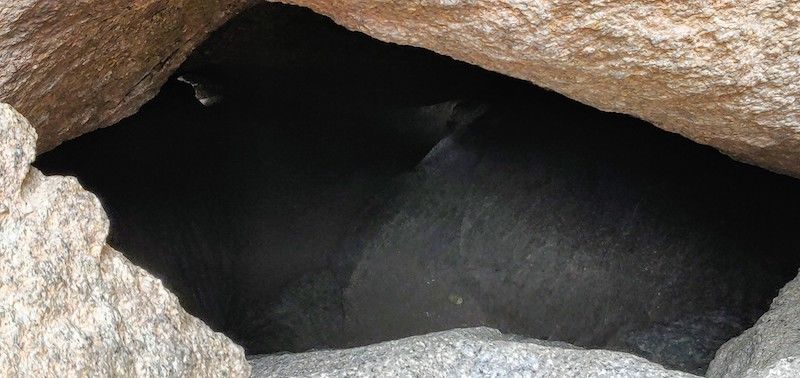
When Hyder Ali wanted to conquer Chitradurga, he made enquires about the fort’s supplies and was told that the fort has enough water for its inhabitants to survive without rain for 12 years !!
The fort’s impressive rainwater harvesting system has to be seen and read to be believed !! There were a series of water tanks created to store the rainwater namely – the Gopalaswami tank overflows into the Akka Honda (elder sister tank). The Akka Honda filters slowly into the Thangi Honda (younger sister tank) through a permeable wall between the twin tanks.
A small channel near the Anjaneya temple directs the surplus from Thangi Honda downstream. Eventually, the water reaches the large Sihineeru Honda (sweetwater tank) that lies in the lower fort area. From here an underground conduit carries the overflow to a large stepped tank called Santhe Honda which today lies within the Chitradurga town, outside the fort. Impressive !!
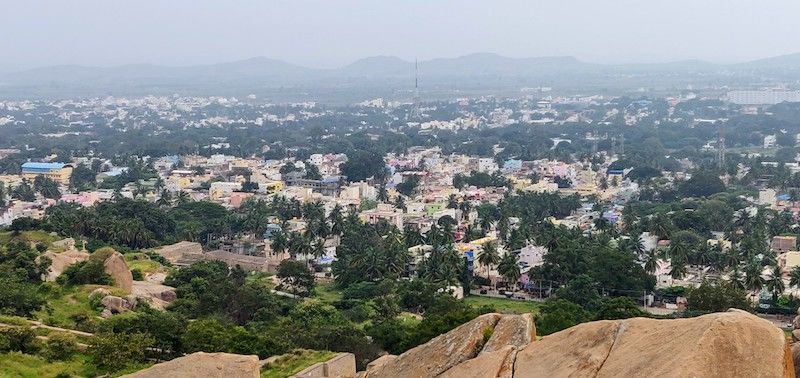
Madakari Nayaka V was the final ruler of the clan from 1758 to 1779. It was during his reign that the city of Chitradurga and the fort fell to Hyder Ali. Madakari Nayaka at times allied himself with Hyder Ali and at others with the Marathas. Hyder Ali attacked the Chitradurga Fort the first time in 1760, the second time in 1770 and the third time successfully in 1779 when he defeated Madakari Nayaka. Nayaka was taken a prisoner and killed. Nayaka’s gamble of playing with both Hyder Ali and the Marathas was not successful; he was betrayed by the Marathas and some local Muslim officers in his service.
It’s an impressive structure; the perfect muse for a photographer and if the stones could speak, the tales they can tell you will span centuries. You need at least half a day to explore this beautiful monument with some satisfaction, maybe I will get another chance !!
Happy travelling,
Anju

